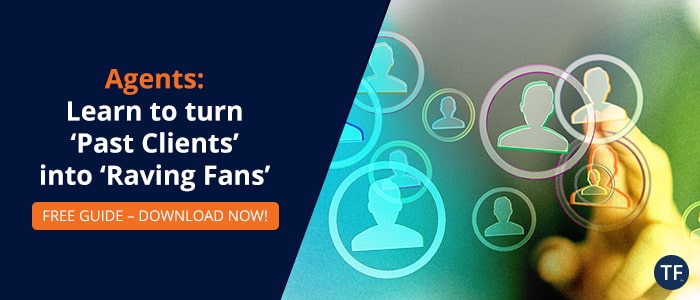Everyone knows that good branding will make people take you more seriously. But truly powerful branding can alter your own psychology, making you more confident and motivated.
The most important aspect of branding is consistency, and this can be daunting to have to constantly keep up with, especially once you begin expanding your business and have different hands working across your marketing and advertising. This is where having a brand bible comes into play.
A brand bible is the rulebook for the way you present your business to the world. Take a closer look at this website. The symbol, the font of my name, the colors, what we post and how often… None of that is an accident. A brand bible isn’t a just a reference guide to design choices; it’s a commitment to extreme growth. By taking the time to create this, you’re planting the seeds of your long-term success.
If you’re not great with design, it’s well worth the money to hire a designer to help get this stuff exactly the way you like it. It’s your business, after all.
Let’s dive in…
1) MVV Statement
This is your Mission, your Vision, and your Values. Keep these to just a few sentences each. Having these perfectly refined and written down on paper is such an incredibly powerful tool.
- Mission: Why are you in real estate? Who do you serve and what can you do to help them?
- Vision: Your ideal vision of the future. How big do you want to grow? Ten years from now, how are you different and how have you helped your community?
- Values: What ethics are you committed to? What will you never compromise on? This list can be a little longer, up to maybe six sentences, but if you say them, you must stick to them.
Once you write these down, rewrite them. Edit, refine, edit, sculpt these words as if your future depends on it, because it does…
2) Your Brand Bible USP
Your Unique Selling Proposition. Again, just a couple of well-crafted sentences. This is how you are different than your competition. What do you have to offer that no one else in your area can? Do you specialize? Don’t come up with something broad or flimsy like, “I care more than anyone else…” That doesn’t make you any money. If you don’t have a strong answer here, think about it and don’t move on until you do. It’ll be worth it.
3) Client Avatar for Your Brand
Who is your target audience? Get more specific… What is his/her name? How old are they? How much money do they make? Kids? What are their hobbies and interests? Do you have any similar hobbies or interests? Where do they work? Get very clear on the person you are trying to target, because this will affect your social media and promotional marketing going forward.
4) Tone / Personality
Who are YOU? This is the place where you are going to define the voice you use in every email, every social media post, every conversation. You’ve heard me say, “Your vibe attracts your tribe.” So, you need to think about your VIBE. What impression do people get when they meet you?
Do you come off as purely professional and knowledgeable? Are you fun and charismatic? Are you funny? There are elements of this that you can control and there are elements that you can’t. And you can NEVER fake it. Play to your strengths. If you’re not funny, don’t try to be a comedian in your social media.
No matter how else you display yourself to the world, there are three things that you should always be, all the time: Trustworthy, Knowledgable, and Dependable.
This is also a good place to list your hobbies and interests. Do you have anything in common with your client avatar? If your vision is to move into the luxury market, maybe you need to have a few more luxury interests. If you live in a fitness forward community, maybe you should think of joining a gym. Your personality and tone will affect everything from how often you post to what types of hashtags you use.
5) What’s Your Brand Bible Color Palette?
These are two or three colors that you’re going to use across everything you do. Color comes directly back to your tone and personality. Are you serious and professional? Fun and easy to engage with? Here is a list of color associations to play with:
- White: Peace, Cleanliness, Honesty
- Black: Authority, Dignity
- Blue: Safety, Trust, Efficiency
- Red: Strength, Stimulation / Hunger
- Orange: Excitement! Energy!
- Purple: Royalty, Luxury (wink-wink)
- Green / Brown: Earthiness, Security, Trustworthiness
- Pink: Comfort, Nurturing, Home
You can pick any colors you want which best express your MVV, except for orange and navy… those are taken… Just kidding. But really, investigate what your competition is using and make sure to stand apart from them.
6) The Logo of Your Brand Bible
There are three kinds of logo: symbol, wordmark, and a hybrid of the two. When it comes to real estate, having a symbol will distinguish you from the competition, but I’d recommend starting out with a hybrid. The name of the game is clarity and simplicity. You want people to know what you do right off the bat. Nothing is going to make you look more professional than a killer logo.
7) Your Brand Bible Font
Bouncing right off your personality, color scheme, and logo, what type (or types) of font are you going to use across your website and emails? Legibility is key, but there is also a lot of personality in typography. Using a serif font will make you seem much more serious but having the vibe of a law firm might not play into the picture of the cool local agent.
8) Make a Brand Bible Inspiration Board
Go online and look at some things you want to mimic or outright steal. What do you want your Instagram landing page to look like? What are the best agents out there doing? Make a Pinterest board, take screen shots, take notes. You want to make a visual reference for your own content.
The point of this brand bible is to give everyone on your team a complete understanding of how to create content for your brand. Let’s say you hire a photographer to take your picture for a billboard. The brand bible is the first thing you give them. So, what are some example billboard photos that fit with your brand image?
Once you have this inspiration board made, there is no excuse to not be making beautiful, consistent content.
9) Your Brand Bible Action Plan
Put it all together. What you want to make is part timeline for the future, part repeating weekly schedule.
What social media platforms do you use? How often do you post on each? How often do you do an informative video vs a walkthrough? What about emails? What does your newsletter look like and how often does it go out?
At this point, you’re incorporating everything you’ve done so far back into your MVV. Look at your vision… How do you get there? It’s time to get started.




